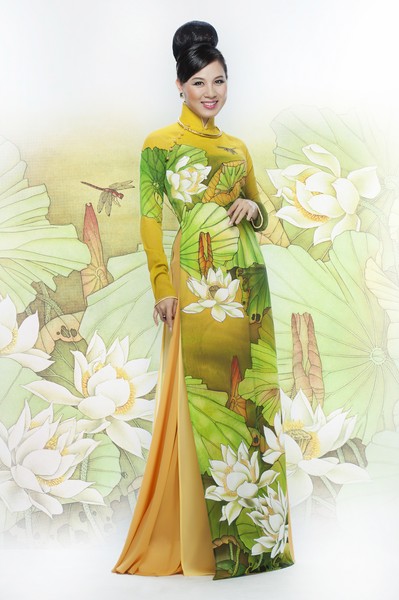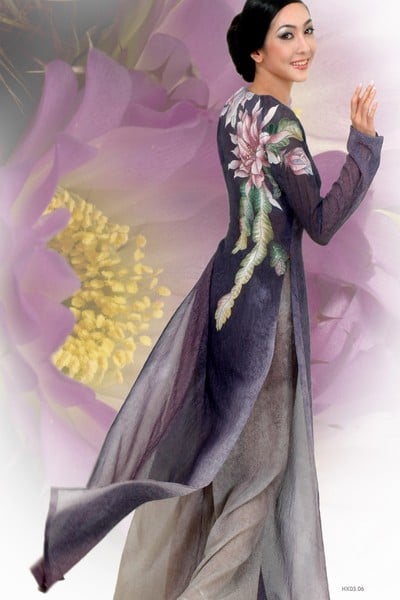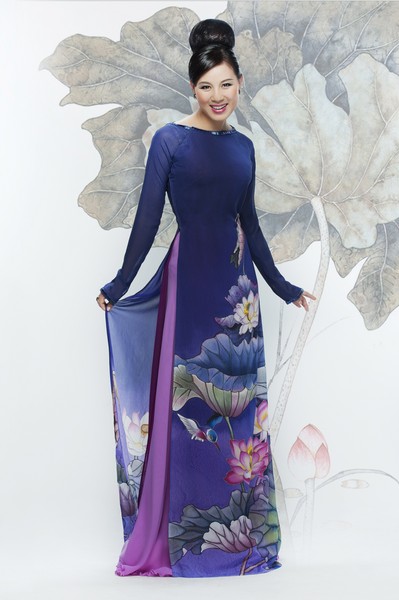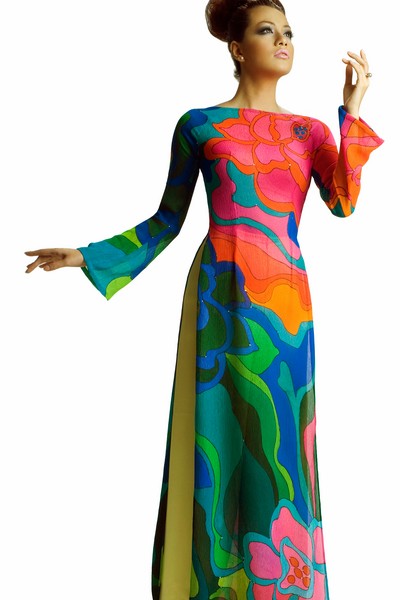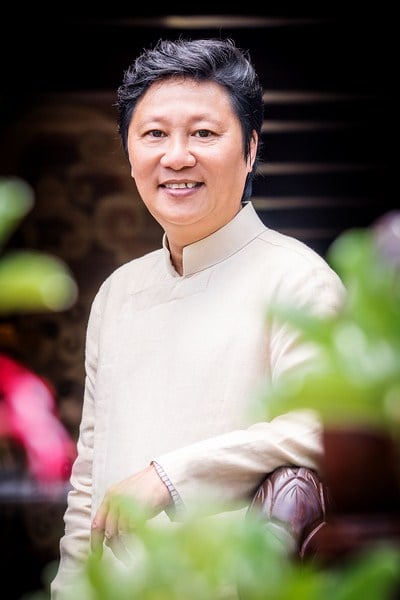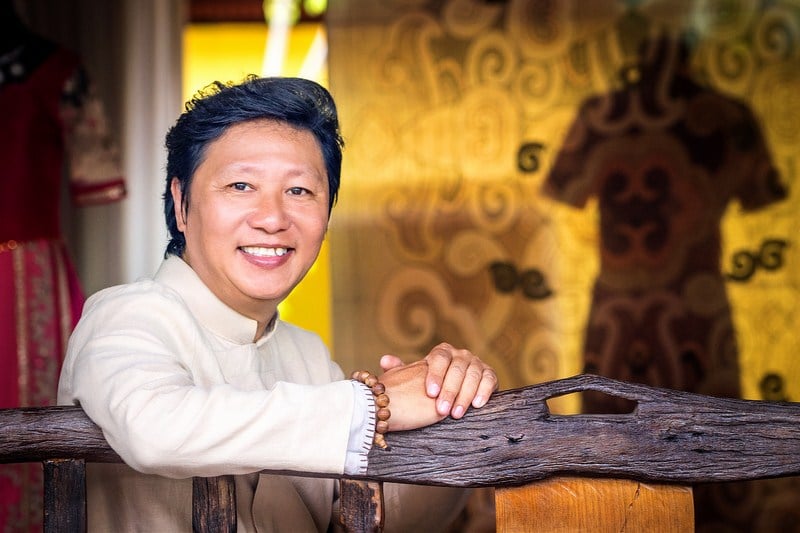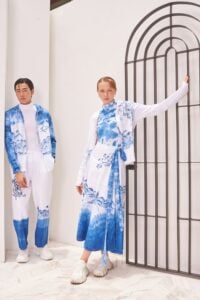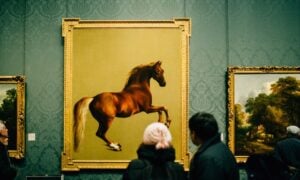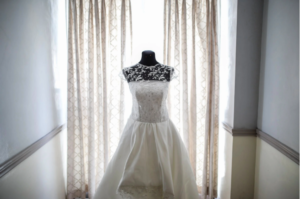Celebrated ao dai designer-artist Si Hoang speaks about opening Vietnam’s only museum Dedicated to this traditional long dress
One of Vietnam’ s most iconic ao dai designers, Si Hoang is as much a philosopher as he is an artist. That is the one factor that has earned him a prestige for his traditional fashions on a scale above many others who have mastered the fine tailoring skills required to understand Vietnam’s national costume—a creative world he initially entered as an outsider, and then went on to redefine. A pioneer in re-conceptualizing the ao dai as a living canvas for fine art, Si Hoang sees in the garment a microcosm of the Vietnamese culture of beauty, and his own oeuvre as being part of the natural evolution of Vietnam’s aesthetic, something he can trace back to the earliest days of the Viet people.
He sits in a fine pavilion built on the vast grounds of his own museum, dressed in a fabulous scholar’s gown that itself hearkens back to the conventions of centuries past. The museum is a realization of his dream to chronicle and preserve the development of the ao dai—it’s a symbol of his accomplishments in the field, and also a treasure chest of examples of the form. One prized exhibit is a ’30s-era Le Mur ao dai that was buried for decades—almost every other piece like it was burned in a purge to protest against French colonists. As he speaks, his eyes trace the lines of one of his most recent accomplishments—a fusion of the Indian sari and the ao dai—and explains how the art of Vietnam and the culture of Vietnamese women can be discerned in any variation on the garment’s design.
“When I studied the ao dai’s history,” he says, “particularly from the 17th century until now, I realized why even now in the 21st century, it is still worn by a lot of people as everyday clothing. It’s because the ao dai is not conservative; in every period of history, it changes. For example, before the 17th century, you had the ao dai thu than. Then when the French came to Vietnam and we fought a war, they also brought the culture of Europe with them— so we developed the ao dai Le Mur. After that, they had the ao dai Tran Le Xuan, which looked like a Champa dress without a collar. Then, during the American hippy era, we had the ao dai hippy. Every time, there’s a change of form.”
“We’ve had thousands of years of war, throughout history, war with big countries,” he notes. “To survive, we had to learn from other cultures, because we didn’t have the time to study and to fight at the same time. We had to learn very quickly, how to read Vietnamese with a Latin alphabet, to make new foods without too much oil like the Chinese, neither raw like Japanese food nor spicy like Indian food. The character we adopt is always a mixture—in architecture, and many art forms in Vietnam. So I think that the practice of adaptation is the reason why Vietnam until now is still Vietnam.”
“About beauty in particular,” he says, “there are many kinds of beauty, so you can’t really define its essence. Every ethnic group will have its own anchor. We integrate these without melting them all together. We preserve a sign of the significant culture of every ethnicity. In terms of beauty, Vietnam can be proud, because we are not one, but 54 different ethnicities.”
According to Si Hoang, the essential beauty of the Vietnamese ao dai lies in its balance. “It’s always a harmony between tradition and modernity,” he explains. “Tradition is something of certainty. Modernity is a gathering of the world’s essences to combine with our traditional values. Over the centuries, Vietnamese women have changed along with the social development of the times. One discovery I’m proud of is that, compared to other Asian countries such as Japan, Korea, or China, Vietnamese women’s role in modern times has been constantly improving in respect to human rights, equal rights. You can see it in the TV dramas, it seems other Asian women are not very respected; despite being well-educated, they are mistreated. In Vietnam, the position of women is higher, and the beauty of a modern woman, as reflected in the ao dai, is proven by her healthy body, fit and without fat. The point is that a woman who wants to look beautiful in an ao dai must be healthy. We say, ‘the longer the waistline, the shorter the life cycle,’ so in the ao dai’s structure, the waist forces its wearer to pay attention to her nutrition, her health. Good health generates a beautiful waistline for wearing an ao dai. When the waistline is tighter, the breasts look bigger and more beautiful—that’s a consideration of beauty you find not only in Vietnam, but all over the world. But here, we still preserve a delicate nature in the garment, concealing the woman’s sex at the front and back.”
“The ao dai’s beauty is in the mixture of the traditional and the modern,” he emphasizes. “In modern times, we take the best things from different cultures and make them our own. For example, on the ao dai, the neck, the sides, are open. You can look, you can see the woman’s beauty easily. But from the front flaps below the waist, you cannot guess. This lower part is traditional, this part at the top is modern. But the slits at the side reach above the waist a little; it’s sexy, but just a little bit.”
Wearable Art
Si Hoang’s approach to the ao dai is perhaps unique, given that he comes to the form from a fine arts rather than a tailoring background. A master of painting and drawing, Si Hoang was a humble art teacher at an architectural university when he unintentionally stumbled upon the form for which he would become famous.
“A couple of years after I became an art teacher,” he remembers, “there was a Miss Ao Dai contest in Ho Chi Minh City. At that time, a girl came to my house with a white ao dai, the kind that girls wear to school every day. She asked me to draw something on her ao dai, because the following night would be very important, the last night of the contest. I thought it was very simple, so I said OK. Very suddenly, she won. She told me that she gave somebody my address, and afterwards, many shops selling ao dais contacted me. At that time they only sold plain-colored garments—and they thought that painting on ao dai could become popular very quickly. So I thought, OK, now I have another job! I could make a little extra money because, you know, an art teacher’s income is very low.”
It was a case of the right idea at the right time. As demand skyrocketed, Si Hoang contracted many of his students— young artists looking for part-time work— to implement his designs. Before long, he was making a month’s salary as an art teacher every day as an ao dai artist.
“I thought it was very simple,” he says. “As an artist, if I paint on a canvas for sale, that’s a very cold world. People may only come to an exhibition to see it. At that time, the economic conditions here were very low. People only rarely came to an exhibition. But painting on an ao dai gives it a beating heart, a life. Art in life, not art in a room.”
Si Hoang’s transition from decorating ao dais to redesigning its essential form was a gradual process that only came to fruition after several years of his growing profile as an ao dai artist, often exhibiting overseas. The creative leap occurred in 1997, when he chanced upon a cultural minorities museum during an art festival in Hanoi.
“At that time, I felt very ignorant,” he says, “because I thought that in Vietnam we only have Vietnamese and Champa, Khmer… then at that time I saw that Vietnam has 54 minority peoples living together; that means there are 54 different cultures. I felt like Ali Baba saying ‘open sesame’ and discovering a great treasure. I spoke with the director of the museum, asking him to let me stay for one week to study every object very carefully. Then I went back, and two months later I held a fashion show during a performance of traditional music and dance. By that time I had realized how to do an ao dai collection—before, it was just decoration. But in the show, for every design, I used ideas from ethnic minority cultures. Art from minorities.”
The fashion show sealed his reputation as a visionary of the ao dai form. “I had reporters interviewing me for 40 magazines and newspapers. Suddenly, many people knew my name. Most importantly, I then knew how to do fashion. How to be creative with the ao dai form, using art.”
Si Hoang’s ao dai museum has become the pinnacle of his international success as a traditional fashions artist. An hour away from central Saigon in one of the city’s most rural municipal areas, the location is chosen for its remoteness, despite the impact on visitor numbers. As a Buddhist, Si Hoang sees no issue with this: “Distance is no problem,” he quips, “but if the heart is far, that’s a problem. If I want to go to Japan to find a kimono museum to study, I’ll go! But if I don’t like something, even if it’s beside me, I won’t go. The heart decides everything.”
Si Hoang’s ao dai museum (Bao Tang Ao Dai, 206/19/30 Long Thuan, Phuong Long Phuoc, D9) will close for renovations between May and September, and will feature new luxury dining and accommodation facilities when it reopens. Ao dai theater exhibitions will continue to be held at 77 Nguyen Hue, D1 during this period.
For more articles from our series dealing with beauty, click here.
IMAGES PROVIDED BY SI HOANG

